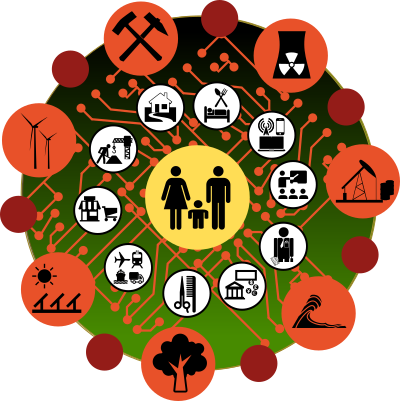Equinox 0.7 release focuses on scope 2 (electricity) emissions
New data models introduced in this release of Equinox cater to the requirement of integrating energy attribute certificate information into the portfolio database.
GHG Accounting offers a means of measuring the direct and indirect emissions to the Earth’s Biosphere of CO2 and its equivalent gases from industrial and other activities. GHG Accounting is a rapidly developing area that has come to receive increased focus in the context of accelerating Climate Change. Given that the generation of electricity and heat accounts for around a third of global GHG emissions electricity consumers have incentives to proactively reduce those emissions by reducing electricity demand, or by shifting energy supply by procuring alternative lower-carbon or renewable resources.
Entities with significant electricity consumption have, thus, effectively a sustainable portfolio management challenge. A basic first step towards meeting that challenge is establishing ground truth: accounting (and increasingly reporting) GHG emissions that are attributed to the operations of the entity. The systematic attribution of GHG emissions to electricity consumption is the subject of Scope 2 Accounting under the GHG Protocol which concerns indirect GHG Emissions from the generation of purchased or acquired electricity, steam, heating, or cooling consumed by the reporting company or other entity.
The overall procedure for accounting for Scope 2 emissions does not deviate from the established patterns of the GHG Protocol:
- Description of the GHG Inventory Boundary and in particular electricity consumption within that boundary
- Information on Emissions (Energy and Emission Sources, Activity data and Emission Factors associated with each activity)
- Information on Methodologies of measurement and Data Quality
- Information on Emission Changes (For Period-on-Period explanations)
This standard GHG quantification and reporting procedure is already mapped in the Equinox architecture, e.g. in the design of its portfolio and reference data models and reporting flows.

The peculiar case of Grid energy attributes
The peculiarity of electricity and Scope 2 emissions is that (in general) energy injected into distribution grids does not retain any of its production attributes and in particular the amount of GHG emissions that were generated during its production. This follows simply from the physics of electricity generation and transmission.
The implication is that metered electricity consumption at any given point-in-time reflects an average of emissions of the various sources (diverse types of power plants) that have contributed power at the time. Reflecting that reality, Location-Based Scope 2 Accounting is a method under the GHG Protocol based on average energy generation emission factors for defined locations, including local, subnational, or national boundaries. Hence, the average Direct GHG Emissions intensity (also called the location-based emissions rate) will be the same for all customers located in an area or region regardless of their supplier or purchases.
So far so good! The location-based approach is both practical and used for Scope 2 GHG reporting. Nevertheless, cogent arguments have been made that a methodology that differentiates and recognizes energy attributes would allow electricity consumers to more clearly express preferences.
On this basis various jurisdictions have developed certification schemes that create informational artifacts that attribute energy produced during a certain period on the basis of the generating device. Market-Based Scope 2 Accounting is an alternative Scope 2 GHG Protocol method based on GHG emissions emitted by the generators from which the reporting entity contractually purchases electricity alongside energy attribute certificates.
In order to facilitate the reporting of Scope 2 emissions under the market-based approach Equinox introduces data models and tools for managing energy attribute certificates, in particular those following the European Energy Certificate System (EECS) standards.
The European Energy Certificate System
The European Energy Certificate System (EECS) is a commercial European framework for issuing, holding, transferring and otherwise processing EU energy certificates. It offers a framework for cross border harmonisation of Guarantee of Origin and similar certificates that allow attributing amounts of electricity (and potentially other forms of energy).
An EECS certificate is an electronic certificate that is uniquely identifiable, transferable and tradeable. It encloses information on the source of the energy and its production method. A certificate may be in any form, including electronic, and lists attributes such as method, quality, compliance, and tracking. Electricity producers, suppliers, or consumers use these certificates when required to use a specific type of energy or to qualify for financial support.
For each reporting period an entity using Equinox for sustainable portfolio management will have one or more certificates (in units of MWh’s of electricity) to document its Scope 2 emissions under the market-based approach. New data models introduced in this release of Equinox cater to the requirement of integrating certificate information into the portfolio database.